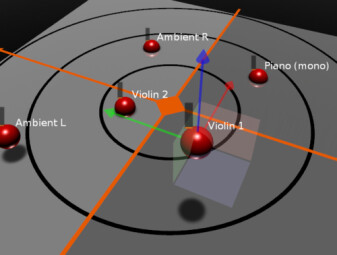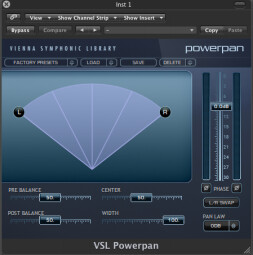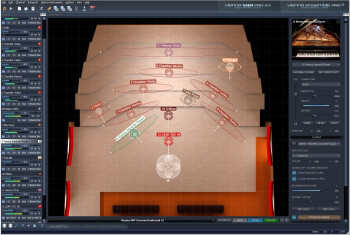The brain is a really amazing tool! In fact, even with our eyes closed we are able to locate the things that surround us as soon as they emit a sound. Fortunately for us, as powerful as it is, the sound analysis of our small brain can be easily tricked in order to create a virtual spatial sensation in our stereo mixes. Here are some ideas that will help you understand better the famous "3D sound" that everyone is talking about.
Nature is your friend
A sound will be different to our ears if it comes from the right or the left, from close or afar. To be able to recreate this in a stereo system, it is better to start by learning what happens in the real world. If the sound comes from the right, do we only listen to it with our right ear? The sense of proximity depends only on the sound’s volume? And what happens from a frequency point of view? Searching the answers to these questions, you will quickly realize that everything is linked and that placing objects in the sound filed is a matter of balancing the panning, level, delay and/or reverb.
Panorama
What could be more natural to place an instrument in the horizontal sound filed than turning the pan pot? This manipulation, as simple as it is, doesn’t do anything but send more signal to one side than the other.
But in nature it is a bit more complicated than that. In fact, due to the speed at which sound propagates in the air, there is also a delay phenomenon to take into consideration. Thus, a sound coming from the left will not only arrive louder to our left ear, but it will arrive softer and with a small delay to our right ear. On the other hand, our head is a natural obstacle that will absorb the highest frequencies. Consequently, a filter that attenuates the high frequency range of the delayed signal will emphasize the sensation of stereo width.
Just a warning before we move on: the delay ought to be used with caution because it can produce serious problems in terms of mono compatibility due to phase issues. Always verify your mixes in mono.
Depth of field
When it comes to the notion of distance relative to a sound source there are several points to consider.
First of all: the closer the sound, the louder it is. This might sound really obvious, but it’s good to have it present. Another thing to take into consideration is the…panorama! A person who whispers to your ear is actually closer to you than someone who is in front of you.
On the other hand, the sensation of distance is greatly related with reverberation, and particularly with the difference in level between the source and the reverberated sound. The farther, the smaller this difference. Moreover, the time difference between the direct sound and the reverberation decreases when the source backs away. Likewise, the longer the distance the sound has to travel, the more the high frequencies are naturally attenuated by the air.
To summarize, to make an instrument seem farther, we have to decrease its volume, center it, increase the reverb’s level (to reduce the difference between direct and reverberated sound), reduce the reverb’s pre-delay time, and filter out high frequencies. To make it sound closer, we have to do the opposite: increase its volume, eventually pan it to the extremes, reduce the reverb’s volume and increase its pre-delay, and emphasize the high-frequency range.
Finally, also consider that an instrument will seem closer when another one is placed farther. It’s a bit like the concept of contrast in images: a white can seem more brilliant when next to a deep black. So, trying to put all instruments upfront will be counterproductive, while placing some in the background will make the ones in the foreground stand out even more.
In order for you to really grasp this “3D effect”, we encourage you to start experimenting with only two sound sources treated with a delay, a reverb and an EQ. By tinkering with all parameters you will learn little by little how to exploit the soundscape better in order to give more depth to your productions.



